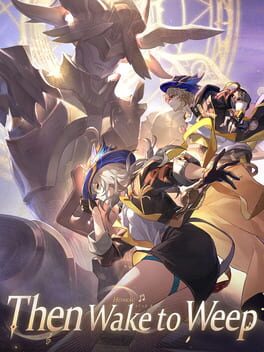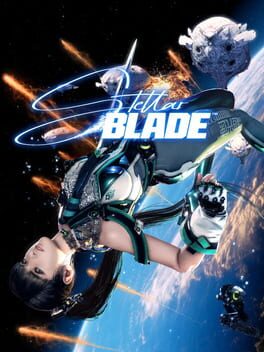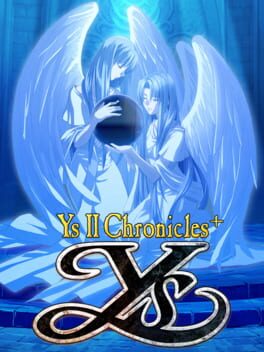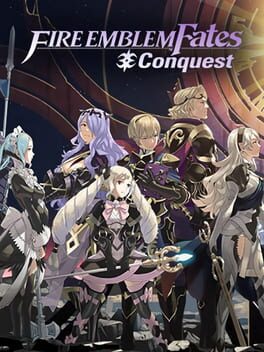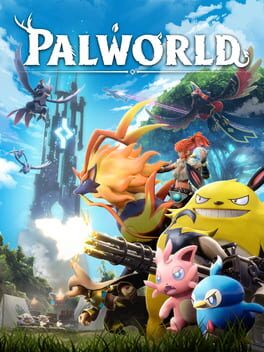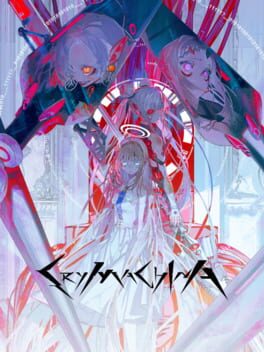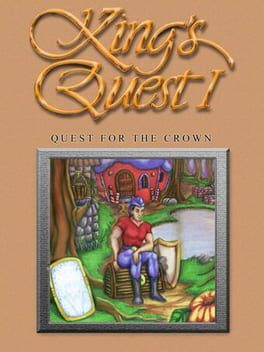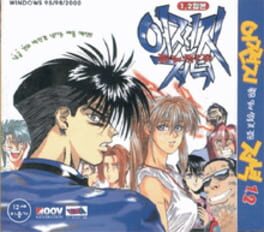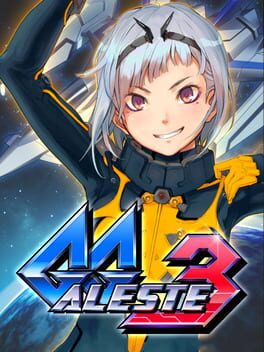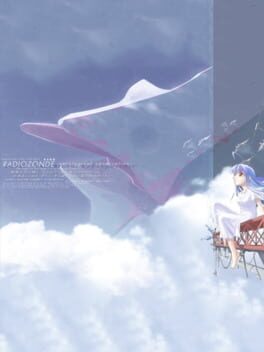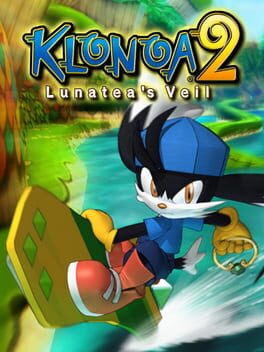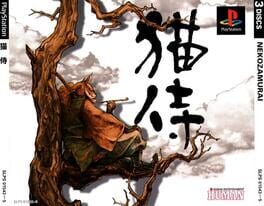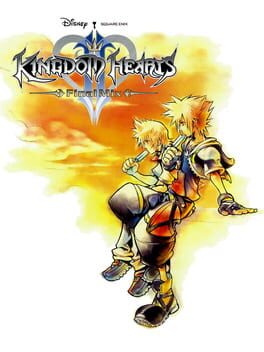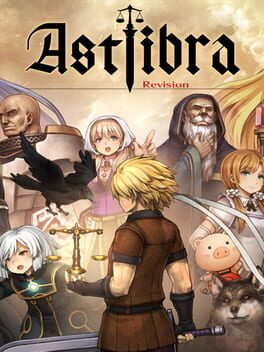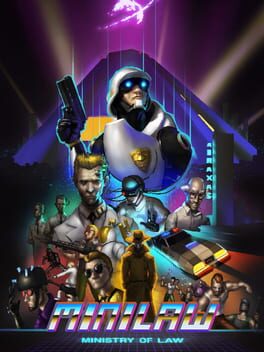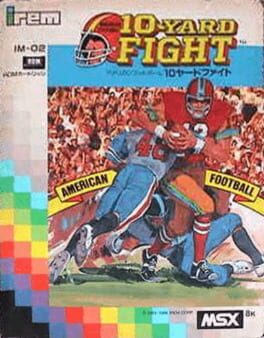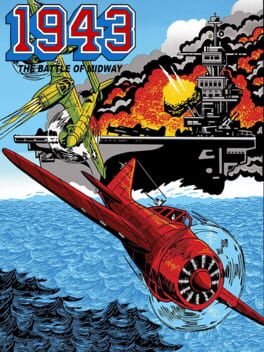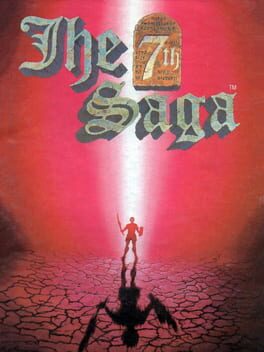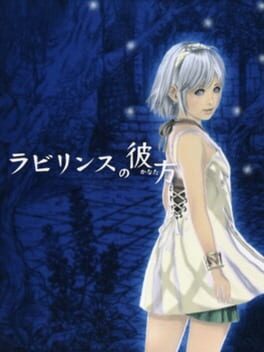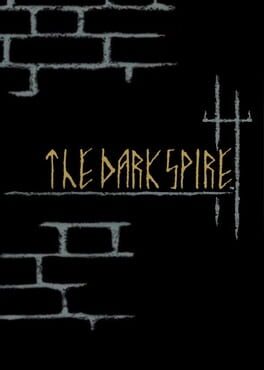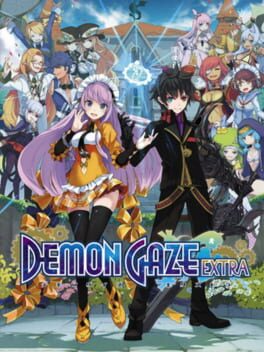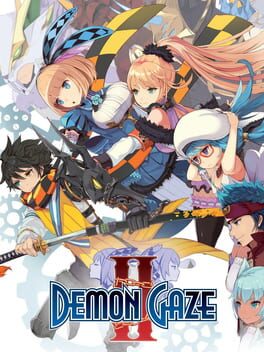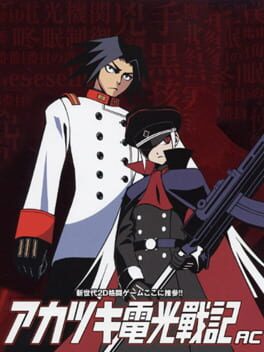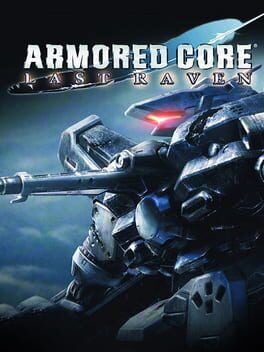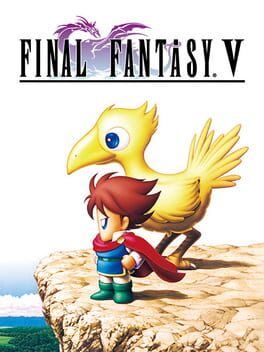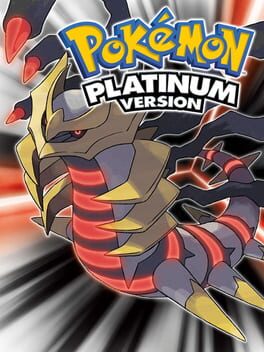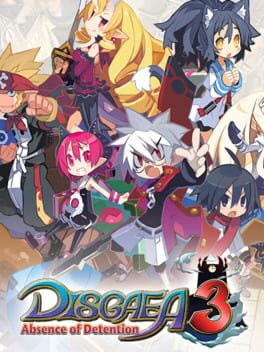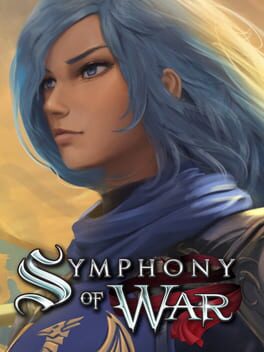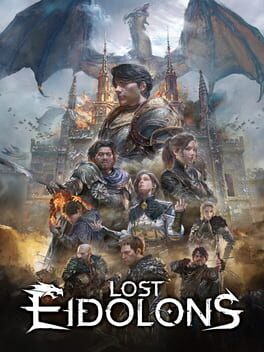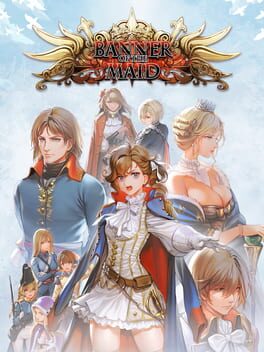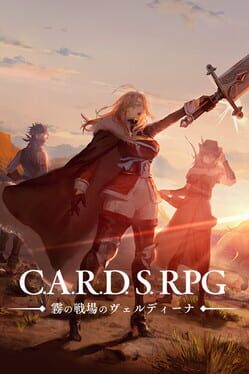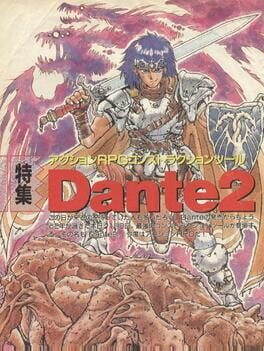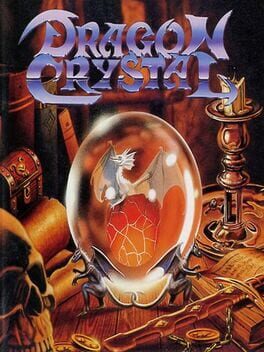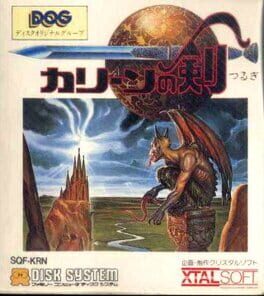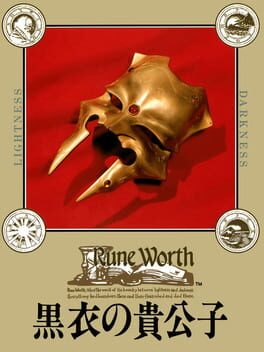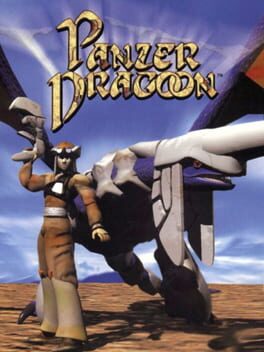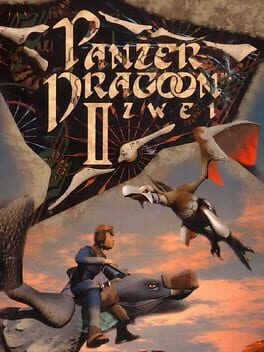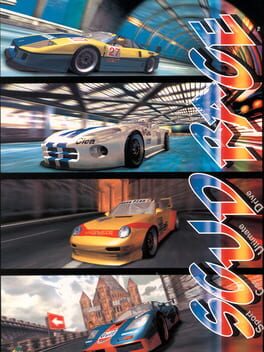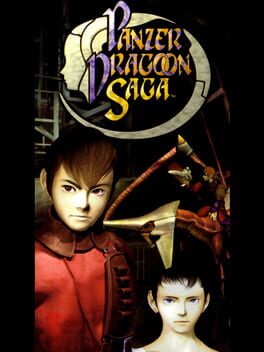Soreil
103 reviews liked by Soreil
Genial diseño de niveles igual que el primer juego, la historia también muy buena y con más de una sorpresa ya por la recta final, para mí no es perfecto porque el combate 1v1 es extremadamente sencillo y por contrario un1v3 o más troopers de la purga o droides de combate suele ser injusto, también en algunas zonas no es tan evidente a dónde hay que ir y eso es molesto, ya que debes consultar el mapa cada 2x3, lo mismo va para algunos puzzles que queriendo imitar los de botw no resultan tan naturales o intuitivos.
Personalmente creo que actividades como jardinería, pesca y otros coleccionables sobran, ya que el juego puede pasarse perfectamente con el sable normal, aunque aprecio que hayan puesto más estilos de lucha (dos sables, sable doble, sable pesado, sable con rifle) eso enriquece el combate pero no soy precisamente un fan de ello, creo que debieron pulir un poco más los combates con varios enemigos pues, como digo, no son precisamente pocos y es molesto morir porque te golpeaban tanto que no alcanzaste a curarte, probablemente me pasó porque solo usé el estilo sable normal, pero precisamente debería estar balanceado, ser todoterreno para cualquier situación, y ya les comento que en esas circunstancias no suele ser buena opción.
Me agrada que decidan arriesgarse al contar la historia, ningún personaje es perfecto y eso hace que me atraiga la historia, ver cómo lidian con esas imperfecciones, como en el juego anterior BD-1 es lo mejor de la historia.
Como juego no arruina nada del anterior, de hecho arreglan cosas como que escalar es menos complicado, ya posees algunas habilidades como salto doble y correr por paredes desde el inicio y aunque el moveset con el sable normal es igual, se expande con los 4 estilos adicionales, aunque como observación sería bueno que pudieras cambiar entre los 5 estilos a la vez, aquí pasa algo como las devil arms en devil may cry 3, dónde solo podías equiparte 2 y en puntos de descanso, sería mejor así. Siguiendo con las mejoras tenemos que ahora puedes tener un impulso extra para saltar (lo que es muy bueno y se siente natural) y también maneras nuevas de resolver puzzles con la fuerza, punto a favor.
Lo jugué en Xbox series S, gráficamente se ve genial, a 30 fps que no me molestaron pero entiendo si hay gente que prefiere los 60 (como fue que jugué el primer juego) y bueno, algunos Bugs tenía, a casi un año de su lanzamiento y uno que otro me arruinó algunos momentos en particular, como que un QTE no funcionó como debía y me complicó la pelea, solo eso me afectó al gameplay, el resto errores visuales que dejé pasar, no soy tan exigente.
En conclusión, un excelente juego, muy buena continuación que no es perfecto pero puedo decir que valió la pena la espera, cumplió mis expectativas.
Personalmente creo que actividades como jardinería, pesca y otros coleccionables sobran, ya que el juego puede pasarse perfectamente con el sable normal, aunque aprecio que hayan puesto más estilos de lucha (dos sables, sable doble, sable pesado, sable con rifle) eso enriquece el combate pero no soy precisamente un fan de ello, creo que debieron pulir un poco más los combates con varios enemigos pues, como digo, no son precisamente pocos y es molesto morir porque te golpeaban tanto que no alcanzaste a curarte, probablemente me pasó porque solo usé el estilo sable normal, pero precisamente debería estar balanceado, ser todoterreno para cualquier situación, y ya les comento que en esas circunstancias no suele ser buena opción.
Me agrada que decidan arriesgarse al contar la historia, ningún personaje es perfecto y eso hace que me atraiga la historia, ver cómo lidian con esas imperfecciones, como en el juego anterior BD-1 es lo mejor de la historia.
Como juego no arruina nada del anterior, de hecho arreglan cosas como que escalar es menos complicado, ya posees algunas habilidades como salto doble y correr por paredes desde el inicio y aunque el moveset con el sable normal es igual, se expande con los 4 estilos adicionales, aunque como observación sería bueno que pudieras cambiar entre los 5 estilos a la vez, aquí pasa algo como las devil arms en devil may cry 3, dónde solo podías equiparte 2 y en puntos de descanso, sería mejor así. Siguiendo con las mejoras tenemos que ahora puedes tener un impulso extra para saltar (lo que es muy bueno y se siente natural) y también maneras nuevas de resolver puzzles con la fuerza, punto a favor.
Lo jugué en Xbox series S, gráficamente se ve genial, a 30 fps que no me molestaron pero entiendo si hay gente que prefiere los 60 (como fue que jugué el primer juego) y bueno, algunos Bugs tenía, a casi un año de su lanzamiento y uno que otro me arruinó algunos momentos en particular, como que un QTE no funcionó como debía y me complicó la pelea, solo eso me afectó al gameplay, el resto errores visuales que dejé pasar, no soy tan exigente.
En conclusión, un excelente juego, muy buena continuación que no es perfecto pero puedo decir que valió la pena la espera, cumplió mis expectativas.
Stellar Blade
2024
Final Fantasy IX
2000
Cirnozardry
2014
Cirnozardry seems to be all but completely unknown in the West. I think that’s a real shame: it’s a solid game with some of the best and most consistent dungeon design I’ve ever seen, easily beating out the vast majority of commercial DRPGs.
I always find it hard to put dungeon design into words, but if you’re familiar with the genre, you’ll have experienced games that get it and games that don’t. Cirnozardry gets it. Each floor is cohesive yet internally varied, never giving way to cacophony or formula; each floor is big enough to explore and get lost in, but not so large that it becomes a slog or runs out of ideas (hello, Mary Skelter). Unlike many DRPGs, including most Wizardry clones, floors are also quite dense: events and treasure chests (usually with good items; eat your heart out, Experience Inc.!) are everywhere. It’s reminiscent of Etrian Odyssey in that way.
The dungeon is always challenging and often mean, but almost never unfair: a one-way door on the first floor drops you into the game’s first Dark Zone*, but if you get lost, there are multiple ways back to the light; there are secret doors aplenty and a near-mandatory one on the third floor, but they follow the symmetry principle and an attentive player should be able to find nearly all of them. With neither an ingame map nor a way to see your coordinates (something even the original Wizardry had!), silent teleporters feel a bit unfair, but they aren’t overused.
What’s more, the variety between floors is excellent. 2F is a tricky maze; 3F is a monster apartment complex; 4F is a brutal mapping puzzle that is mercifully optional (if you found the hidden door on the last floor, at least). Claustrophobic 7F gives way to wide-open 8F.
The combat system is unremarkable (if you’ve ever played an RPG Maker 2000 game before, you know what to expect), but the playable characters are well-designed: Cirnozardry excels at differentiation within a niche. For example, opening treasure chests without triggering traps requires a thief-type character in the party, of which two are available from the start. The first, Nazrin, is a terrible combatant with awful skills and poor equipment options, but with a completely unique ability: an overhead view of the dungeon. The other, Kogasa, lacks this ability but has better stats, helpful in-combat skills, and the ability to equip heavy weapons and armor: in short, she can actually contribute in combat. In this way, Cirnozardry throws a bone to people who struggle with mapping without giving them a free lunch.
When it comes to presentation, Cirnozardry takes a turn for the strange. Wireframe dungeons give way to the usual RPGMaker battle screen and, occasionally, overhead-view cutscenes. Sprites are a mix of WolfRPG resources and assets ripped from other games. When you kill an enemy, they play the player death sound from Touhou; each floor’s BGM is taken from a different Touhou stage. An unseen audience cheers when you find a rare treasure chest and gasps when you trigger a trap or fall down a pit. This strange collage works extremely well in practice if you can tolerate a little bit of clash.
So Cirnozardry is an excellent game. But there’s one caveat: it’s very, very punishing. Most obviously, there’s absolutely no ingame map; you have to draw your own. Floor sizes and starting locations are inconsistent, so I can’t recommend paper—you’re liable to go over the edge of the sheet. I used Graph Paper, a Japanese tool with a functional machine-translated English release whose name makes it almost impossible to Google in English; it’s linked at the bottom of this post.
The economy can be brutal. Reviving characters is incredibly expensive; your income never outscales the fees (imagine early-game Wizardry 1 if it were the entire game), nor does any character learn a resurrection spell. This is compounded by an unfortunate lack of money: random encounters drop no gold and treasure chests from respawning fixed ones drop gold or an item, not both (and when they drop gold, it’s always a bizarrely small quantity). The only way to stay afloat is to aggressively sell items, which can feel bad if you’re the sort of person who likes to keep one copy of anything.
This also intensifies the strange dichotomy of hallway battles and room battles. Without the pittance of gold afforded them in Wizardry and the like, hallway battles feel like a complete waste of resources and effort. So fine, seek out room battles—except that a handful of floors, most egregiously 5F, have large areas with almost none of them. Exploring these areas feels unrewarding, and if you keep dying, you might have to take a break to grind rooms to afford Eirin’s revival fees.
This next part contains spoilers for the last stretch of the game:
After ten floors of relatively normal exploration, you take on the Shining Needle Castle, a brutal three-floor gauntlet with a Final Fantasy VI-like multi-party system. Here’s where the game asks you to form a second team and use eight of its eleven characters, and where you become very grateful that it has two healers. This doesn’t entail a grind—characters not in the party always receive full XP from battle, and, unless you’ve gone crazy with the sell button, there should be enough gear to go around—but if you’ve used the same four characters for most of the game, you’re going to have to experiment with the ones you haven’t.
Like in FFVI, you can swap between parties with a button press, and progressing often requires one party to step on a switch that lifts a gate somewhere else. Unlike in FFVI, this takes place in a nightmare labyrinth that’s tricky even to map. Eventually, you’ll unlock a switch that opens a shortcut from 1F to 2F, followed by one that opens 3F for business.
3F offers a different sort of challenge. It’s small and easy to explore—the stairs to the final boss are straight down south, and the switch that opens them for business is a few steps north—and it doesn’t have any real two-party switch puzzles. Instead, it hosts five minibosses, each of whom grants the final boss a special skill and respawns whenever you enter the dungeon. Naturally, a party that fights all the minibosses won’t be in any shape to take on the final boss, so you once again have to use both parties: one to do the prepwork, the other to fight the final boss with its resources intact. (A conveniently-placed save crystal means you don’t need to redo the minibosses every attempt.)
Or, of course, you can take on the final boss with its skills intact. That’s what I did, and it wasn’t terribly hard; I beat it on my second try after taking too many level-draining (!) attacks at the start of the first. The game gives you more than enough tools to make it work.
I always find it hard to put dungeon design into words, but if you’re familiar with the genre, you’ll have experienced games that get it and games that don’t. Cirnozardry gets it. Each floor is cohesive yet internally varied, never giving way to cacophony or formula; each floor is big enough to explore and get lost in, but not so large that it becomes a slog or runs out of ideas (hello, Mary Skelter). Unlike many DRPGs, including most Wizardry clones, floors are also quite dense: events and treasure chests (usually with good items; eat your heart out, Experience Inc.!) are everywhere. It’s reminiscent of Etrian Odyssey in that way.
The dungeon is always challenging and often mean, but almost never unfair: a one-way door on the first floor drops you into the game’s first Dark Zone*, but if you get lost, there are multiple ways back to the light; there are secret doors aplenty and a near-mandatory one on the third floor, but they follow the symmetry principle and an attentive player should be able to find nearly all of them. With neither an ingame map nor a way to see your coordinates (something even the original Wizardry had!), silent teleporters feel a bit unfair, but they aren’t overused.
What’s more, the variety between floors is excellent. 2F is a tricky maze; 3F is a monster apartment complex; 4F is a brutal mapping puzzle that is mercifully optional (if you found the hidden door on the last floor, at least). Claustrophobic 7F gives way to wide-open 8F.
The combat system is unremarkable (if you’ve ever played an RPG Maker 2000 game before, you know what to expect), but the playable characters are well-designed: Cirnozardry excels at differentiation within a niche. For example, opening treasure chests without triggering traps requires a thief-type character in the party, of which two are available from the start. The first, Nazrin, is a terrible combatant with awful skills and poor equipment options, but with a completely unique ability: an overhead view of the dungeon. The other, Kogasa, lacks this ability but has better stats, helpful in-combat skills, and the ability to equip heavy weapons and armor: in short, she can actually contribute in combat. In this way, Cirnozardry throws a bone to people who struggle with mapping without giving them a free lunch.
When it comes to presentation, Cirnozardry takes a turn for the strange. Wireframe dungeons give way to the usual RPGMaker battle screen and, occasionally, overhead-view cutscenes. Sprites are a mix of WolfRPG resources and assets ripped from other games. When you kill an enemy, they play the player death sound from Touhou; each floor’s BGM is taken from a different Touhou stage. An unseen audience cheers when you find a rare treasure chest and gasps when you trigger a trap or fall down a pit. This strange collage works extremely well in practice if you can tolerate a little bit of clash.
So Cirnozardry is an excellent game. But there’s one caveat: it’s very, very punishing. Most obviously, there’s absolutely no ingame map; you have to draw your own. Floor sizes and starting locations are inconsistent, so I can’t recommend paper—you’re liable to go over the edge of the sheet. I used Graph Paper, a Japanese tool with a functional machine-translated English release whose name makes it almost impossible to Google in English; it’s linked at the bottom of this post.
The economy can be brutal. Reviving characters is incredibly expensive; your income never outscales the fees (imagine early-game Wizardry 1 if it were the entire game), nor does any character learn a resurrection spell. This is compounded by an unfortunate lack of money: random encounters drop no gold and treasure chests from respawning fixed ones drop gold or an item, not both (and when they drop gold, it’s always a bizarrely small quantity). The only way to stay afloat is to aggressively sell items, which can feel bad if you’re the sort of person who likes to keep one copy of anything.
This also intensifies the strange dichotomy of hallway battles and room battles. Without the pittance of gold afforded them in Wizardry and the like, hallway battles feel like a complete waste of resources and effort. So fine, seek out room battles—except that a handful of floors, most egregiously 5F, have large areas with almost none of them. Exploring these areas feels unrewarding, and if you keep dying, you might have to take a break to grind rooms to afford Eirin’s revival fees.
This next part contains spoilers for the last stretch of the game:
After ten floors of relatively normal exploration, you take on the Shining Needle Castle, a brutal three-floor gauntlet with a Final Fantasy VI-like multi-party system. Here’s where the game asks you to form a second team and use eight of its eleven characters, and where you become very grateful that it has two healers. This doesn’t entail a grind—characters not in the party always receive full XP from battle, and, unless you’ve gone crazy with the sell button, there should be enough gear to go around—but if you’ve used the same four characters for most of the game, you’re going to have to experiment with the ones you haven’t.
Like in FFVI, you can swap between parties with a button press, and progressing often requires one party to step on a switch that lifts a gate somewhere else. Unlike in FFVI, this takes place in a nightmare labyrinth that’s tricky even to map. Eventually, you’ll unlock a switch that opens a shortcut from 1F to 2F, followed by one that opens 3F for business.
3F offers a different sort of challenge. It’s small and easy to explore—the stairs to the final boss are straight down south, and the switch that opens them for business is a few steps north—and it doesn’t have any real two-party switch puzzles. Instead, it hosts five minibosses, each of whom grants the final boss a special skill and respawns whenever you enter the dungeon. Naturally, a party that fights all the minibosses won’t be in any shape to take on the final boss, so you once again have to use both parties: one to do the prepwork, the other to fight the final boss with its resources intact. (A conveniently-placed save crystal means you don’t need to redo the minibosses every attempt.)
Or, of course, you can take on the final boss with its skills intact. That’s what I did, and it wasn’t terribly hard; I beat it on my second try after taking too many level-draining (!) attacks at the start of the first. The game gives you more than enough tools to make it work.
Ys II Chronicles+
2013
[Archived Forum Discussion: Adol vs Kratos]
" Kratos is a literal god vs some guy that is a traveler lol nah Adol gets bodied ez "
" Shield Staff negates any damage at the cost of mana, so if Adol keep eating pears to regen all MP he would never take damage "
" I feel kratos with spartan rage would still body him tho? "
" Shield staff negates any damage "
" so your saying a guy that can negate damage wins against the guy that literally two series worth of GODS and is immortal "
" Shield staff negates any damage "
" Kratos is a literal god vs some guy that is a traveler lol nah Adol gets bodied ez "
" Shield Staff negates any damage at the cost of mana, so if Adol keep eating pears to regen all MP he would never take damage "
" I feel kratos with spartan rage would still body him tho? "
" Shield staff negates any damage "
" so your saying a guy that can negate damage wins against the guy that literally two series worth of GODS and is immortal "
" Shield staff negates any damage "
Palworld
2024
Crymachina
2023
I've tried to do multiple writeups on this to try and struggle with how to present my feelings on this while seeming sincere; it's easy to make something impersonal, to try and have that boundary between me as the writer and you as the reader. After all, it already exists; by you reading it through a screen, the words here can't be felt by your hands. You can't change them by yourself. They exist in a different plane, needing technology to observe and interact with it. But to make something that surpasses that boundary and allows you to see my heart, ripped from its cage and displayed for the world requires detail and care, but it also requires a deep understanding of what exactly one is writing. I understand Crymachina as it feels as its heart has been displayed as a gourmet meal, with all the dressings that surround it, but I am not sure how I as a writer am able to deliver this care to you effectively.
But that feels appropiate for Fuyuki Hasashi and FuRyu's newest work; a work that thirsts for and deeply requires for you to see the extent of its love and hate. How it desires deeply for unconditional love yet despises the world it has been brought into, one that detests that love in the macro scale and works towards destroying and minimizing it in the grind to become larger than life. To scam and kill in the literal and figurative in how one gets ahead of others in modern society, and Crymachina understands this and disparages it in a molotov cocktail thrown towards them. Crymachina is both that, but also a tour de fource of love, with how each part of the cast contains love inside them and sprouts in different manners, but never truly considers one irredeemable for harboring that love; because to love is to be human, and to be human is to love, and to love is to exist for it.
Even more impressive is the lengths that Crymachina goes to to be an anti-humanist yet progressive piece of art, as what it truly hates is the humanist ideal represented by contemporary society. Why do we disparage and discriminate against others? We may be carnivores and utilize natural resources to survive in the current age, yet discrimination and to see other intelligent beings as lesser because of a biased criteria is in itself an act against true humanity. Where we are born, who we love, what we eat and what we believe in does not matter to our value as humans, and Crymachina truly despises those who participate in that culture, representing them as hideous horrors. To take some words from the producer's interview with NISa, to claim that people are precious because they're human is willfully ignorant; it is the degree of human they are that matter.
Beyond that, Crymachina's all-female cast comes at its benefit when its story and cast are unmistakeably queer not just in the clear representation of lesbian love, but also in how it compares with modern society's discrimination of it. Mikoto and Ami's relationship are the most clear on this with their unmistakeable codependency, but Mikoto's fear of truly defining it because of its stigma: she'd like to be "cool". Ami, in contrast, being head over heels, desperately wishes to be unashamedly married and in love with Mikoto, and constantly fights against a society that doesn't allow her to be legally married. That is her goal as a Real Human after all: to be a proper family. And that sort of dialogue feels reflective of Japan's current struggle to legalize gay marriage, where Crymachina represents this with two great leads, and yells at the world to accept them.
Leben and Enoa are also a more interesting angle of it in the sci-fi sense in contrast to Mikoto and Ami's unsubtle contemporary dialogue; while Mikoto and Ami are unmistakeably considered to be humans, their label seems more shaky in terms of Leben and Enoa; Leben being a "human" with no past and a hatred for it, while Enoa being a machine with love for humans. This dynamic does continue to evolve in ways I'd not expand on because of spoilers, but their romantic relationship is the peak of Crymachina's representation of love and humanity, becoming representations of Crymachina's entire thesis statement: to be human doesn't matter without love. By experiencing love, by struggling to love, do you become a true human.
And in that framework of love does Crymachina shine. I adored Crymachina's story. I love its environmental design, taking Crystar's similar aesthetic with its coloring and transfixing that on larger scaled sci-fi arquitecture. Its music by Sakuzyo (who I found out while playing made one of my favorite albums!) is also a great accompanying piece, with the boss themes sung by Enoa's voice actress being the standouts. Everything about Crymachina is a true labour of love, and for that, I embrace it through my screen, appreciating it and loving it wholeheartedly.
"Please continue to share your life with us."
But that feels appropiate for Fuyuki Hasashi and FuRyu's newest work; a work that thirsts for and deeply requires for you to see the extent of its love and hate. How it desires deeply for unconditional love yet despises the world it has been brought into, one that detests that love in the macro scale and works towards destroying and minimizing it in the grind to become larger than life. To scam and kill in the literal and figurative in how one gets ahead of others in modern society, and Crymachina understands this and disparages it in a molotov cocktail thrown towards them. Crymachina is both that, but also a tour de fource of love, with how each part of the cast contains love inside them and sprouts in different manners, but never truly considers one irredeemable for harboring that love; because to love is to be human, and to be human is to love, and to love is to exist for it.
Even more impressive is the lengths that Crymachina goes to to be an anti-humanist yet progressive piece of art, as what it truly hates is the humanist ideal represented by contemporary society. Why do we disparage and discriminate against others? We may be carnivores and utilize natural resources to survive in the current age, yet discrimination and to see other intelligent beings as lesser because of a biased criteria is in itself an act against true humanity. Where we are born, who we love, what we eat and what we believe in does not matter to our value as humans, and Crymachina truly despises those who participate in that culture, representing them as hideous horrors. To take some words from the producer's interview with NISa, to claim that people are precious because they're human is willfully ignorant; it is the degree of human they are that matter.
Beyond that, Crymachina's all-female cast comes at its benefit when its story and cast are unmistakeably queer not just in the clear representation of lesbian love, but also in how it compares with modern society's discrimination of it. Mikoto and Ami's relationship are the most clear on this with their unmistakeable codependency, but Mikoto's fear of truly defining it because of its stigma: she'd like to be "cool". Ami, in contrast, being head over heels, desperately wishes to be unashamedly married and in love with Mikoto, and constantly fights against a society that doesn't allow her to be legally married. That is her goal as a Real Human after all: to be a proper family. And that sort of dialogue feels reflective of Japan's current struggle to legalize gay marriage, where Crymachina represents this with two great leads, and yells at the world to accept them.
Leben and Enoa are also a more interesting angle of it in the sci-fi sense in contrast to Mikoto and Ami's unsubtle contemporary dialogue; while Mikoto and Ami are unmistakeably considered to be humans, their label seems more shaky in terms of Leben and Enoa; Leben being a "human" with no past and a hatred for it, while Enoa being a machine with love for humans. This dynamic does continue to evolve in ways I'd not expand on because of spoilers, but their romantic relationship is the peak of Crymachina's representation of love and humanity, becoming representations of Crymachina's entire thesis statement: to be human doesn't matter without love. By experiencing love, by struggling to love, do you become a true human.
And in that framework of love does Crymachina shine. I adored Crymachina's story. I love its environmental design, taking Crystar's similar aesthetic with its coloring and transfixing that on larger scaled sci-fi arquitecture. Its music by Sakuzyo (who I found out while playing made one of my favorite albums!) is also a great accompanying piece, with the boss themes sung by Enoa's voice actress being the standouts. Everything about Crymachina is a true labour of love, and for that, I embrace it through my screen, appreciating it and loving it wholeheartedly.
"Please continue to share your life with us."

